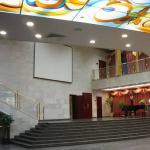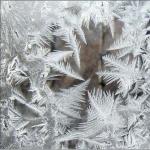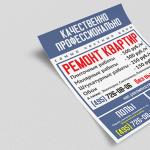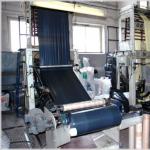Exhibition project "Art Born by Fire: Artistic Casting of the Urals of the 18th-21st Centuries". Exhibition “Art Born by Fire. Artistic casting of the Urals of the XVIII-XXI centuries. Art born of fire
Directions: to the metro station "Kolomenskaya"
The exhibition “Art Born by Fire. Artistic casting of the Urals of the 18th-21st centuries”, dedicated to the famous artistic casting from cast iron, which, no doubt, has become “ calling card» Ural region and Russia as a whole. The exhibition will continue its work until January 22, 2017.
Traditions of iron casting developed during the reign of Peter I, and in our time this area of Russian decorative and applied arts is the most important industry domestic art industry.
The uniqueness of the exhibition project lies in the fact that objects from the collections of twenty museums of our country are exhibited in the halls. These are the museums of Moscow, St. Petersburg, Yekaterinburg, Perm, Zlatoust, Chelyabinsk, Yaroslavl. The enterprises of the world-famous Kasli Iron Foundry sent their works to the exhibition. The project involves thirteen collectors from different cities and two Moscow antique salons. In total, more than 1,500 works of arts and crafts are exhibited at the exhibition.
The exhibition covers a large historical period in the production of iron products - XVIII-XXI centuries. Art products from different eras and the annotations accompanying them tell about the improvement of production technologies, demonstrate a huge assortment and various areas of artistic casting of the Urals, reveal the beauty of cast iron works.
The exhibits of the exhibition are different both in size and purpose. These are busts, medals, vases, candelabra, ashtrays, writing instruments, picture frames, pieces of furniture and household utensils. In addition to mass-produced items, places of honor in the halls are occupied by unique works of iron foundry art with interesting history creation or existence.




Guests are presented with authentic items that were at the first World Exhibition, held in Paris in 1900: the sculpture "Russia" by Nikolai Laveretsky; chandeliers decorating the entrance to the Kasli pavilion (it is interesting that the chandeliers were first combined in our halls a century later, since one of them is constantly kept in the Yekaterinburg museum, the other is in a private collection); key rings that were distributed to visitors to the World Exhibition. In the halls you can see the models, according to which castings were made at factories during the life of Peter I; early cast-iron products of the Verkh-Isetsky plant, for example, the “Apotheosis of Alexander” stove, which is an allegory of Russia's victory over Napoleon. There are also sculptures dedicated to Peace, made for the arrival of US President Ronald Reagan.
The exhibition project consists of three main sections: products of the Kasli and Kusinsk industries, as well as products of other factories in the Urals.
The story at the exhibition begins with the present. Visitors get acquainted with the production facilities that presently represent the Russian iron foundry industry on the world and domestic markets. The spiral of time gradually unwinds, and the audience is immersed in the history of the Ural art casting. The section of the 20th century presents works that reflect the peaceful labor of Soviet citizens, images of political figures of the USSR and other states, objects with Soviet symbols, themes of war, Soviet sports, ballet, circus, literary series, fairytale and cartoon themes, animalism and much more.
The last section includes the casting of Zlatoust, Verkh-Iset, Kamensk-Ural, Nizhny Tagil, Votkinsk, Verkhne-Ufaley, Perm and other Ural factories. The works of different years presented in this section clearly show that the Ural art casting is not one or two separate factories, but an entire industrial sector that has been developing over the course of a century.
Two printed editions have been prepared for the exhibition. This is an extensive catalog, with descriptions of more than 1400 art products from cast iron and articles about objects that were first introduced into scientific circulation at this exhibition. The second edition is an index of the hallmarks of the Kasli and Kusinsk industries, as well as the hallmarks of the Kamensk-Uralsky plant. The catalog and index are useful reference materials and a kind of guide to the exhibition for people interested in art casting, and especially for experts and collectors.
At the opening ceremony of the exhibition Art Born by Fire. Artistic casting of the Urals of the XVIII-XXI centuries. was attended by the Minister of Culture of the Chelyabinsk region Betekhtin Aleksey Valerievich.
The guests were:
|
Ratiani Natalya Georgievna - Deputy Representative of the Governor of the Sverdlovsk Region for Public Relations |
Zlokazova Svetlana Yurievna - Head of the Department of Culture of the Administration of the Kasli Municipal District |
Rostovtseva Natalya Mikhailovna - Director of the Museum Center in Kusy |
|
|
|
Gubkin Oleg Petrovich - leading employee of the Sverdlovsk Regional |
|
Malaeva Zamira Gafarovna - Lecturer, Department of Arts, Russian State University for the Humanities, |
Gileva Ksenia Alexandrovna – Head of the Department of the Yekaterinburg Museum of Fine Arts |
Gileva Xenia Alexandrovna presented an album dedicated to the Kasli pavilion at the World Exhibition in Paris in 1900. |

Director of the Sverdlovsk Regional Museum of Local Lore Natalya Konstantinovna Vetrova
Greetings from foreign museum workers, collectors, antique dealers and fans of art casting from iron
(Elizabeth Barthel)Elisabeth Bartel) - curator of the collection of Prussian art castings in the museums of Berlin, Germany:
“I am very sorry that I will not be able to visit the exhibition. I wish all organizers, friends and supporters of the exhibition project in Moscow a large number of interested and curious visitors. Only in this way can the art of artistic iron casting be preserved for future generations. My gratitude to all those who tirelessly deal with this topic, financially support and inspire other people with their activities. Iron foundry greetings from the museum of the city of Berlin from Elisabeth Barthel!”
DDoctor Anna Vorschler-Tarrasch (Anna Forschler– Tarrasch) - curator of artistic cast iron at the Birmingham Museum of Art, Birmingham, USA:
“Congratulations on the success of the exhibition! This is one of the largest exhibitions on the topic "Artistic cast iron casting" held so far. Visitors will be able to experience and understand the entire history of artistic iron casting production in Russia, and will have the opportunity to see examples that previously could not be seen at all or could not be seen at the same time. The exhibition is a masterpiece and will go down in history. Best wishes!".
– Leonhard Posch. Portrait modelleur und Bildhauer. 1750-1831 ”(2002) contains a description of 1038 works by Leonard Posh made of cast iron, bronze, porcelain and plaster, which are in museum collections and private collections, 284 pages, more than 1000 illustrations;
– European artistic iron casting at the Bitmingham Museum of Art. Collections of Gustav Lamprecht and Maurike Garbata. (2009) contains a description of 994 items made in the Royal Prussian iron foundries (Gleiwitz, Berlin and Sein), non-Prussian German foundries and factories, private foundries in Berlin (Seebas, Mewes, Geis and Devarand), Austria, the Czech Republic and Russia. The volume of the monograph is 384 pages, more than 1100 illustrations and scientific apparatus.
Master MArtina Pall (Mag. Martina Pall -director museumHanns Shell Collection Graz,Graz, Austria:
“Our museum wishes a large number of visitors and success to your exhibition and to all Russian collectors of artistic iron casting. We are glad that in Russia the traditions of masters in such a specialized field of applied art as artistic iron casting continue. It is very important that the exhibition is accompanied by a catalogue. This will "prolong" the duration of the exhibition, as collectors and fans of art cast iron will get new ideas and the opportunity to find objects for comparative analysis in the catalog.
Our museum, which has more than 3,000 artistic cast iron items made in Austria, Hungary, Germany, Russia, the Czech Republic and other countries, is ready to discuss the possibility of future exhibition of a part of its collection (for example, artistic cast iron from Austria and Germany) at an exhibition in your museum.
Kinga Xibi (Kinga csibi) - Director of the Casting Museum, Budapest, Hungary:
“As you can see from the press release and photos of some items sent to me, the exhibition will be very good and interesting. I am very sorry that I will not be able to visit her. I wish you every success!”
Hannelore Ploetz-Peters (Hannelore Ploetz– Peters) and Roland Peters (Roland Peters) is an antique firm "Antiquitaeten Ploetz– Peters", Berlin, Germany:
“From Berlin, we wish the Russian museums participating in the exhibition, their curators and private collectors good luck, many visitors and a new look at Russian art craft at the wonderful exhibition “Art Born by Fire. Artistic casting of the Urals of the XVIII-XXI centuries. in the Moscow State United Museum-Reserve. good start and best wishes in everything."
Anna Franziska Schwarzbach (Anna Franziska Schwarzbach) - sculptor and medalist, Berlin, Germany:
“Unfortunately, artistic iron casting is still not appreciated in the way it deserves. That is why your exhibition is very important. It will show everyone how closely connected Russia is with Europe. By the way, in the city of Lauchhammer, only Russians are now working in production. I must speak Russian foundry. It would be nice to hold this exhibition in the museum of artistic iron casting in Lauchhammer. I plan to visit Moscow and your exhibition.”
Franziska Schwarzbach Since 1987, it has been reviving the best traditions of German artistic ironwork from the early 19th century, combined with gold. The author of the bronze monument to M.L. Rostropovich in Kronberg (Germany), which is the “cello capital of the world”.
Iron foundry in Lauchhammer was founded in 1725. Currently, more than 2,500 models are stored in the storerooms of the enterprise. The register of products is maintained from 1784 to the present.
Jörg Firnges (Joerg Firnges) - former head of artistic cast iron casting at Buderus, Hirzenhain, Germany:
“05/31/2015, the direction of artistic casting of the Buderus company was closed. The iron foundry museum in Hirzenchfein has been refocused on other projects and has other priorities.
So my greeting is informal. I wish you every success at the exhibition, good “hands” in the selection of exhibits and many good visitors and interesting discussions.”
Foundry "Buderus" in Hirzenhain was founded in 1731. had rich history. A new stage began after the Second World War (a wide range of art castings, including New Year's plaques cast in 1949-2006, Jewelry according to Devarann's models). In 1990, a museum of artistic iron casting was opened.
The Museum-Reserve invites all connoisseurs of arts and crafts who are not indifferent to the national history to the halls of the Sytny Dvor.
Directions: metro station "Kolomenskaya"

Map-scheme of the museum-reserve
Opening hours of the exhibition: Tuesday-Sunday from 10.00 to 18.00, Monday is a day off.
Tickets are sold at the box office of the museum-reserve from 10.00 to 17.30, as well as on the site of the museum-reserve.
Ticket price: for the main category 150 rubles, for the preferential category 50 rubles, special price - free of charge.
On weekends and holidays Excursions for combined groups will be held at the exhibition at 15.00, 16.00, 17.00. Ticket for excursion service (1 person) - 50 rubles.
September 29, 2016 at 16.00 in the halls of the Sytny Dvor of the Moscow State United Museum-Reserve Grand opening a unique exhibition project dedicated to the famous artistic cast iron casting, which is a "visiting card" not only of the Ural region, but of Russia as a whole.
In the museums of central Russia and in Moscow, there is no permanent exhibition of artistic iron casting. The only exhibition dedicated to this phenomenon of domestic industry was held in Moscow more than 75 years ago, back in 1940. Metamorphosis of cast iron, simple and cheap building material, which in the hands of skillful Ural foundry masters becomes elegant and aesthetically inspired works of art, cannot but delight and evoke a feeling of joy and pride in the national culture. The traditions of artistic iron casting began to take shape during the reign of Peter I, and in our time this area of Russian arts and crafts is the most important branch of the Russian art industry.
The project of the museum-reserve is unique, as the halls exhibit items from the collections of twenty leading museums of our country, antique shops, private collections, as well as four existing Ural enterprises, producing today artistic casting and covers almost the entire time period of the emergence, development and flourishing of this original art. The exhibition presents more than 1,500 works of interior and office sculpture, objects of decorative and applied art, memorial, landscape gardening and architectural casting.
The earliest item in the exhibition is from the collection of the State Historical Museum - a floor slab from the tomb of the Gagarins, cast in the Urals in 1702. Guests are presented with authentic items that were at the World Exhibition held in Paris in 1900: the sculpture "Russia" by Nikolai Laveretsky; chandeliers decorating the entrance to the Kasli pavilion (it is interesting that the chandeliers were first combined in our halls a century later, since one of them is permanently kept in the museum of Yekaterinburg, the other is in a private collection); key rings that were distributed to visitors to the World Exhibition. In the halls you can see authentic models of E.E. Baumgarten from the collection of the Russian Museum, which were used to make castings for the Paris Exhibition; early cast-iron products from various Ural factories, for example, the Apotheosis of Alexander stove (Verkh-Isetsky plant), which is
an allegory of Russia's victory over Napoleon, or a gift from the workers of the Kusye-Alexandrovsky plant to Count Shuvalov - a dish depicting Mount Blagodat, where, according to legend, the Vogul Stepan Chulpin was burned by his fellow tribesmen for showing the Russian authorities ore deposits. A unique part of the exposition is represented by items from the collections of the State Hermitage and the Russian Museum (St. Petersburg) - early bas-reliefs depicting members of the imperial family, received by the State Hermitage from the collection of the famous Russian collector of antiques Plyushkin (who served as a prototype for one of the main characters N .V. Gogol in " Dead souls”), authentic works of art by the famous sculptor Klodt K.A.
Few people know that the pre-revolutionary Urals could also boast of icons made of cast iron, which, unfortunately, have not been preserved, since they were melted down in Soviet times. The more valuable are the remaining copies - plaquettes with the image of saints, sculptural plastic. The largest exhibit is “Jesus. (Come to me, all who suffer) ", 1.3 m high and an angel - 1.1 m.
The exhibition presents items presented to royal persons and important political figures from different eras. For example, tables cast by the Urals personally for the Secretary General of the USSR L.I. Brezhnev for his famous three books (two of them are on display), genre sculptures dedicated to the theme "World Peace" made for the arrival of US President Ronald Reagan in 1988 . to Moscow.
Modern casting, presented at the exhibition, is not inferior in quality and beauty to pre-revolutionary ones - we have before us the peaceful labor of Soviet citizens, objects with Soviet symbols, themes of Soviet sports, ballet, literary series, fairy tale and cartoon themes, and much more. Special attention dedicated military theme: Patriotic War of 1812, World War I, Afghanistan and, of course, items dedicated to the Great Patriotic war. These are touching works “Return from the front”, the defense of Sevastopol, etc. The frozen memory in metal reminds us of the price at which the Great Victory was won. Few people know that
Guests will be able to get acquainted not only with the exhibits, but also with production technology, literature and sources on the topic of artistic casting. Two printed editions have been specially prepared for the exhibition. This is a hallmarks catalog and index, which are useful reference materials and a kind of guide to the exhibition for people interested in artistic cast iron casting, and especially for experts and collectors.
The opening ceremony will be attended by the head of the Department of Culture of Moscow Kibovsky A.V., the ministers of culture of the Sverdlovsk (Krekov P.V.) and Chelyabinsk (Betekhtin A.V.) regions, representatives of Mechel PAO and the Kasli plant, as well as the administrations of the cities of the Urals: Kusy, Kasley, Zlatoust, Yekaterinburg, Perm, Chelyabinsk and directors of participating museums from different cities of our country.
We invite all connoisseurs of Russian artistic iron casting and those who are not indifferent to the history of arts and crafts to the halls of the Sytny Dvor.
Especially for Peter-T - Lidia Nikolaeva
MOSCOW STATE UNITED MUSEUM-RESERVE
KOLOMENSKOE - IZMAILOVO - LEFORTOVO - LUBLINO.
Dear ladies and gentlemen, colleagues and friends, lovers of Russian art!
Museum-Reserve "Kolomenskoye" invites you to visit a large-scale exhibition project "Art casting of the Urals: XVIII-XXI centuries." The exhibition will be held in the exhibition halls of the Sytny Dvor of the Museum-Reserve from October 17, 2016 to January 22, 2017.
For the first time, more than a thousand cast iron items from different eras will be presented in one exhibition space, which will allow the viewer to make a kind of visual excursion into the history of this unique type of Russian art production.
The exhibition is designed to arouse interest in the art and collecting of Russian artistic iron castings and contribute to strengthening patriotic pride in the country and its cultural achievements.
The participants of the exhibition are the oldest state and young private Russian museums, whose funds contain large and diverse collections of Ural art metal, as well as major Russian collectors and Moscow antique galleries, without whose most interesting collections of Kasli and Kusin castings of the 19th - early 21st centuries. the idea of this largest cultural phenomenon of the Russian art industry in Russia cannot be complete and clear.
The art of artistic casting of the Ural factories will be widely represented by the best sculptural, interior, landscape gardening, memorial and architectural castings of the largest iron foundries of the second half of the 19th - early 21st centuries. (Kasli and Kusinsky factories), as well as chamber objects of decorative and applied art of the first half of the 19th century, related to the products of the oldest factories in the Southern Urals (Kushvinsky, Verkh-Isetsky, etc.). Among the exhibits of the exhibition for the first time will be presented in in large numbers original bronze models, the presence of which in the production of the Ural factories provided them with the breadth and aesthetic diversity of the artistic assortment of cast iron products. The exposition will be complemented by rare samples of albums and price lists of art castings of the late 19th - first half of the 20th centuries, showing a high professional level of production technology and being the best recommendation of the Ural mining art industry.
The exhibition catalog is being prepared for publication. We will be glad to see you!
Exhibition administration.
site - preparation for the exhibition.
We are proud to announce that we ("Ural Antiques (website)") are participants in the first all-Russian exhibition: “Art born of fire. Artistic casting of the Urals in the 18th - 21st centuries. which will take place this autumn in Moscow.
Unique and rare specimens of cast iron were selected throughout Russia, from the finest private collections to over 20 museums. The selection of sculptures was carried out personally by one of the leading experts of the Kolomna Museum - Z. G. Malaeva.
We provided for the exhibition 42 rare exhibits of Kasli castings and we will participate in the official opening September 29, 2016 in Kolomenskoye (exhibition halls of the nourishing yard), where we would like to meet our customers.

"Ural Antiques (website)" is official internet representative All-Russian exhibition “Art Born by Fire. Artistic casting of the Urals of the XVIII-XXI centuries. Moscow city.



Photo and video report from the opening of the exhibition.
The All-Russian Exhibition "Art Born by Fire. Artistic Casting of the Urals in the 18th-21st Centuries" has begun its work. Moscow, Kolomenskoye, exhibition halls of the nourishing yard - The most serious large-scale event of the year. I publish part of the photo from the opening of the exhibition.
Opening of the exhibition...

Exhibition exposition...
The brand-identifier of Kasli, Kus, Kamensk-Uralsk and the catalog of this exhibition have been issued.
Evaluation of the expert of the branding-determinant of Kasli, Kus, Kamensk-Uralsk ...
September 29, 2016 at 16.00 in the halls of the Sytny Dvor of the Moscow State United Museum-Reserve, the grand opening of a unique exhibition project dedicated to the famous artistic cast iron, which is a "calling card" not only of the Ural region, but of Russia as a whole, will take place.
In the museums of central Russia and in Moscow, there is no permanent exhibition of artistic iron casting. The only exhibition dedicated to this phenomenon of domestic industry was held in Moscow more than 75 years ago, back in 1940. The metamorphosis of cast iron, a simple and cheap building material, which in the hands of skillful Ural casters becomes elegant and aesthetically inspired works of art, cannot but delight and evoke a feeling of joy and pride in the national culture. The traditions of artistic iron casting began to take shape during the reign of Peter I, and in our time this area of Russian arts and crafts is the most important branch of the Russian art industry.
The project of the museum-reserve is unique, as the halls exhibit items from the collections of twenty leading museums of our country, antique shops, private collections, as well as four existing Ural enterprises that produce art casting today and cover almost the entire time period of the appearance, development and flourishing of this original art. The exhibition presents more than 1,500 works of interior and office sculpture, objects of decorative and applied art, memorial, landscape gardening and architectural casting.
The earliest item in the exhibition is from the collection of the State Historical Museum - a floor slab from the tomb of the Gagarins, cast in the Urals in 1702. Guests are presented with authentic items that were at the World Exhibition held in Paris in 1900: the sculpture "Russia" by Nikolai Laveretsky; chandeliers decorating the entrance to the Kasli pavilion (it is interesting that the chandeliers were first combined in our halls a century later, since one of them is permanently kept in the museum of Yekaterinburg, the other is in a private collection); key rings that were distributed to visitors to the World Exhibition. In the halls you can see authentic models of E.E. Baumgarten from the collection of the Russian Museum, which were used to make castings for the Paris Exhibition; early cast-iron products from various Ural factories, for example, the "Apotheosis of Alexander" stove (Verkh-Isetsky factory), which is an allegory of Russia's victory over Napoleon, or a gift from the workers of the Kusye-Alexandrovsky factory to Count Shuvalov - a dish depicting Mount Blagodat, where, according to legend, the Vogul was burned Stepan Chulpin by his fellow tribesmen for showing the Russian authorities the ore deposits. A unique part of the exposition is represented by items from the collections of the State Hermitage and the Russian Museum (St. Petersburg) - early bas-reliefs depicting members of the imperial family, received by the State Hermitage from the collection of the famous Russian collector of antiques Plyushkin (who served as a prototype for one of the main characters N .V. Gogol in "Dead Souls"), genuine works of art by the famous sculptor Klodt K.A.
Few people know that the pre-revolutionary Urals could also boast of icons made of cast iron, which, unfortunately, have not been preserved, since they were melted down in Soviet times. The more valuable are the remaining copies - plaquettes with the image of saints, sculptural plastic. The largest exhibit is "Jesus. (Come to me all who suffer)" 1.3 m high and an angel - 1.1 m.
The exhibition presents items presented to royal persons and important political figures from different eras. For example, tables cast by the Urals personally for the Secretary General of the USSR L.I. Brezhnev for his famous three books (two of them are on display), genre sculptures dedicated to the theme "World Peace" made for the arrival of US President Ronald Reagan in 1988 . to Moscow.
Modern casting, presented in the exhibition, is not inferior in quality and beauty to pre-revolutionary ones - we have before us the peaceful labor of Soviet citizens, objects with Soviet symbols, themes of Soviet sports, ballet, literary series, fairy tale and cartoon themes, and much more. Particular attention is devoted to the military theme: the Patriotic War of 1812, the 1st World War, Afghanistan and, of course, items dedicated to the Great Patriotic War. These are the touching works "Return from the Front", the defense of Sevastopol, etc. The frozen memory in metal reminds us of the price at which the Great Victory was won.
Guests will be able to get acquainted not only with the exhibits, but also with production technology, literature and sources on the topic of artistic casting. Two printed editions have been specially prepared for the exhibition. This is a hallmarks catalog and index, which are useful reference materials and a kind of guide to the exhibition for people interested in artistic cast iron casting, and especially for experts and collectors.
We invite all connoisseurs of Russian artistic iron casting and those who are not indifferent to the history of arts and crafts to the halls of the Sytny Dvor.
Directions: metro station "Kolomenskaya"
Entrance from the metro station "Kolomenskaya"
























